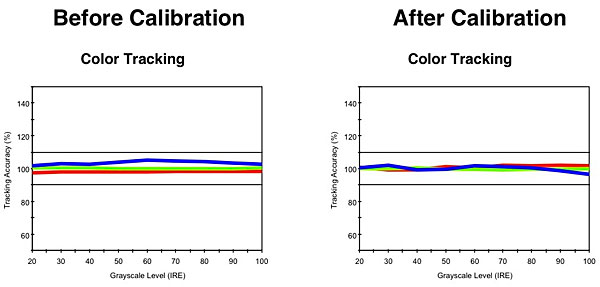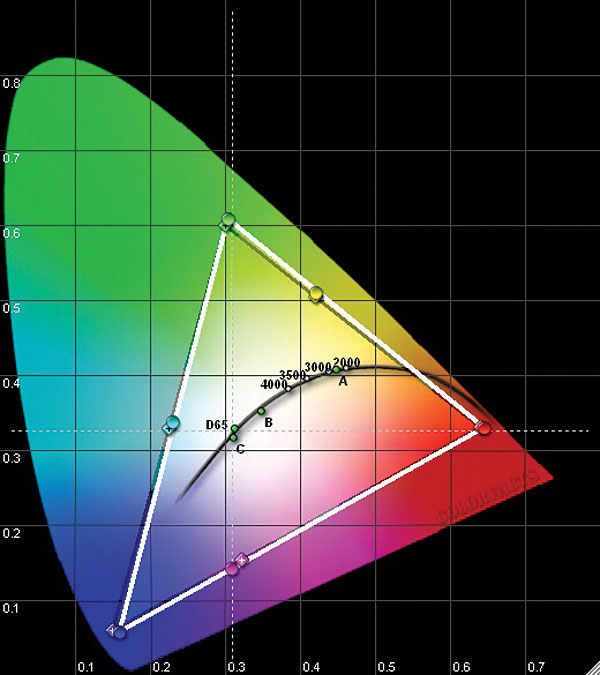Sharp Elite PRO-60X5FD 3D LED LCD HDTV HT Labs Measures
Full-On/Full-Off Contrast Ratio: 25,080:1
The measurements were taken in the movie (THX) mode, through an HDMI input.

The above result was taken in the local dimming On setting of the intelligent variable contrast (IVC) control, with the backlight on –3, the contrast control at +28, the brightness at +1, and the gamma adjustment at –1. At those settings, the peak white level was 25 foot-lamberts and the black level 0.001 ft-L. The latter is the lowest reading possible with our industry-standard Minolta LS-100 light meter and therefore doesn’t provide laboratory-grade precision. However, it’s clearly close and representative of the visual result in which some very faint light was visible on screen when displaying a full black field. With the gamma adjustment at 0, the measured gamma averaged 2.17, with a high value of 2.22 and a low value of 2.14. With the gamma at minimum (–2), the average was 2.34 with a high of 2.42 and a low of 2.28. The high values (indicating darker mid-tones) were at the high end of the brightness range and the low values (brighter mid tones) at the lowest.
With local dimming off, the black level increased to 0.011 ft-L (though it dropped to 0.001 after a few seconds), with a peak white level of 23.49 ft-L, for a full-on/full-off contrast ratio of 2,135:1.

The available settings of the backlight control, together with the advanced settings of the IVC control offer a generous brightness overhead. With the backlight at its maximum (+16), IVC on advanced high and the remaining settings unchanged, the peak white level reached 186 ft-L. I don’t recommend this torch (ure?) mode setup, but as noted in the review, there’s enough spare brightness, even at more sane settings, for superior punch in 3D.
After some false starts in the Elite pure mode, which proved to be less than accurate (probably by creative design), I went immediately to movie (THX), which proved to be the right choice for both 2D and 3D (it can be set up separately for each). In 2D, the Delta E values, even before calibration, never exceeded 5.0. After calibration, they remained at 2.3 or less. The After Calibration 3D result deviated significantly at a very dark 20 IRE, with a Delta E of just under 16, but remained below 2.82 at all other brightness levels. Prior to calibration, it was under 2.77 from 30 IRE to 90 IRE, going rogue only at 20 IRE and 100 IRE. Delta E is a figure of merit indicating how close the color comes to the ideal D65 white point.

The set’s color gamut in the THX modes (see the CIE chart—2D is shown, 3D was very similar) was also excellent, with good color points before calibration. I used the CMS controls to fine-tune the color points a bit (in 3D) and bring the brightness levels closer to the Rec. 709 standard values (for both 2D and 3D).—TJN








































